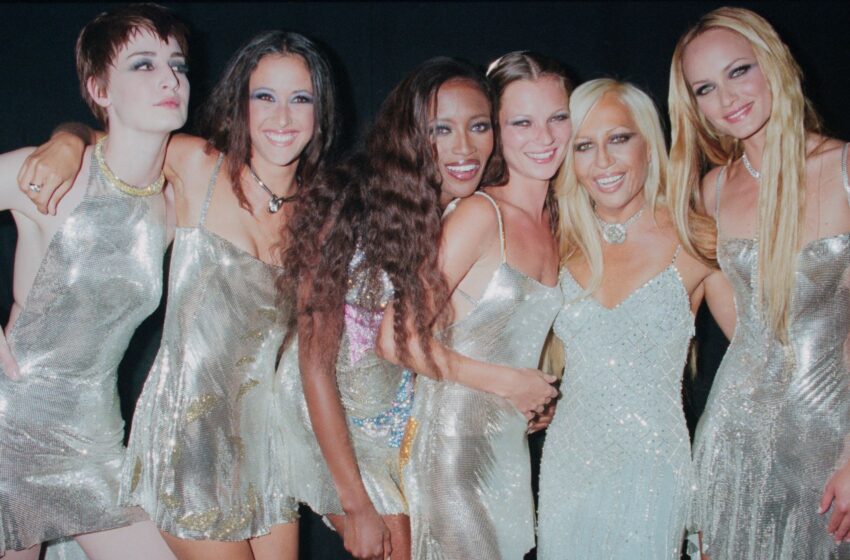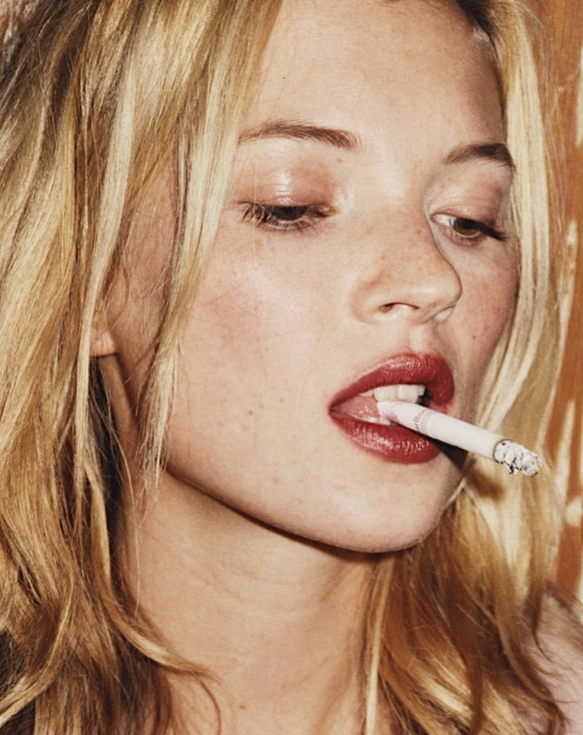
Is Y2K fashion promoting 90s heroin chic?
With fashion trends typically on a 30-year cycle, it was as expected that the 90s and early 2000s trends would start to remerge about now. With the shift from skinny jeans back to baggy jeans along with the return of cargo pants, these old trends are slowly filtering their way into all of our wardrobes. The rebirth of this fashion era has many fun aspects, like the return of the velour bejewelled juicy tracksuits and big sunglasses, allowing us all to embrace our inner Paris Hilton. However there is a much more dangerous and damaging side that comes with this new way of dressing – ‘90s heroin chic’ isn’t just a fashion trend, but a lifestyle. With the glamorization of smoking cigarettes and abusing substances, there is the risk of taking this trend way too far.

In the 90s, a younger Kate Moss became the poster girl for 90s heroin chic. Not only was she at the forefront of the fashion industry as a model and therefore influencing what people wore, but she perpetuated this party girl lifestyle. Young girls began to idolize her and associate her slim figure with all the partying. Moss and her peers’ influence on young women was unprecedented. With Kate famously being a smoker and drug user in her youth, it became a sort-of normalized culture. Famously coining her mantra that ‘nothing tastes as good as skinny feels’, Kate, and 90s heroin chic as a movement, has been harshly criticized and blamed for encouraging eating disorders. Moss has since apologized for this.
Photo Credits: @90s.daily on Instagram
In recent years there has been an onus placed on body positivity. With the help of inclusive brands such as Savage X Fenty, a conversation about the diversity of body types was opened up along with long overdue discussions of race and gender inclusivity. Celebrities, influencers and models such as Ashley Graham and the Kardashian’s have also aided this movement with the public embracing of their curves. The new generation’s prioritisation of self-love, although at times perpetuating toxic positivity, has overall done so much good for the physical and mental health of young people.
The influence of these public figures today, much like Kate Moss in the 90s, is immense. Although sometimes used for good, their actions can also have deeply detrimental effects. The Kardashian’s recent rumoured reversals of their BBLs expresses an unattainable idea that one can drastically change body shapes from day-to-day. Although this is only possible due to the money, plastic surgeons, home gyms and personal trainers abundantly available to them, young people consuming their media don’t always think about it this way. It’s time to stop making body types a trend as if they’re clothes you can take on and off. It begs the question: was body positivity simply a trend itself?
Photo Credits: @kimkardashian on Instagram

The clothes themselves which are considered ‘Y2K fashion’ add to these conversations and concerns about the unattainable body types which the trend encourages. Crop tops, the micro mini-skirt and super low-rise jeans all leave a large amount of the body on show. With certain body parts such as the stomach largely exposed, some may feel the pressure to appear ‘skinny’ and fulfil this ultra-thin image. With these harmful terms thrown around in discussions of these trends, we can’t help but wonder how healthy this trend (or lifestyle) really is.
The unhealthy aspects of the trend don’t end there. With grunge being at the centre of this era, the look of dark eyes and messy hair further perpetuates this image of the party girl who is crazy yet still unattainably beautiful. As Elle phrased it in a 2019 article about 90s fashion, ‘Grunge was comfortably imperfect’. People romanticise the undone and worn-out kind of look, which promotes this carefree feeling that is synonymous with the trend.
Although fun when interpreted as purely a fashion trend, Y2K fashion can easily turn into a far more delicate matter when embodied as a lifestyle. In other words, fashion trends risk becoming dangerous when individuals become unhealthy in an attempt to achieve them. It is important to remain hyper-aware of this and the fact that, like all trends, it will eventually phase out.

